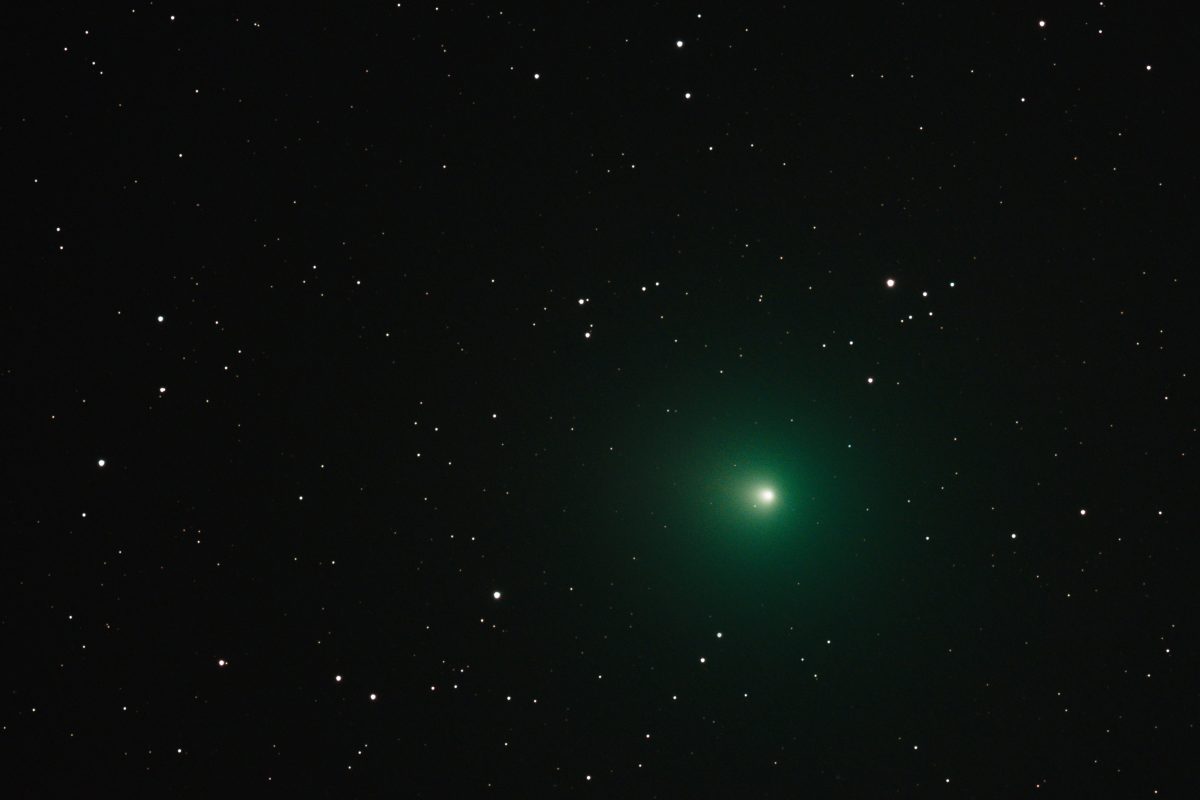
The comet will be tailed by a green glow as carbon is burned off. Photo: David Hajnal.
A droplet of icy cosmic ‘snot’ will fly over Australia this week in the form of a recently discovered green-coloured comet from the distant reaches of our solar system.
The C/2022 E3 (ZTF) is named after the Zwicky Transient Facility that discovered it in March 2022 using a wide-field survey camera.
It’s believed to be the first time the comet has come to this neck of the galaxy in half a million years.
It was closest to Earth on 2 February, still 41.8 million kilometres away, but according to Australian National University (ANU) astrophysicist Dr Brad Tucker, the best time for those in NSW and the ACT to spot the ZTF comet is between Monday, 6 February, and Saturday, 11 February.
“It will be too low on the horizon before then, but from 9 pm on 6 February, we should just start to be able to see it in the northern sky, near the Orion constellation.”
Dr Tucker says the brightness of comets is always a bit hard to predict but it should be “borderline visible to the naked eye”.
“But you’ll definitely be able to see it with a pair of binoculars or a telescope,” he says.
“It will also be quite spectacular on 11 February, when the comet will be right next to Mars.”
Comets are typically frozen shards of asteroids or planets – “dirty snowballs” – that have been relegated to an area beyond Pluto called the Oort Cloud. We never see them except when they get knocked into the sun’s gravitational pull and start a very long journey towards the centre of the solar system.
“As they get closer, the sun heats them up and the ice turns to a gas, which takes the form of a beautiful glow coming off the comet,” Dr Tucker says.

The Milky Way galaxy, complete with a streaking asteroid, as seen from Canberra. Photo: Ari Rex.
In the case of the ZTF comet, the green colour is due to the carbon burning off, along with methane and other gases.
The journey can take thousands of years, and not all comets make it.
“Sometimes they get too hot and break apart.”
Those that survive are effectively slingshotted back towards the edge of the solar system, in what Dr Tucker dubs the “yo-yo effect”. Some aren’t carrying enough speed by the time they do reach the edge and fall back in. The cycle then repeats over millennia.
The likes of Hayley’s Comet might have a regular orbit around the sun, whereas Dr Tucker says it’s hard to say if this one has come past us before.
“It probably came in a very long time ago, and we’re just seeing one of those returns,” he says
Provided it makes the journey in one piece, ZTF is estimated to return in about 50,000 years.
“Unless you’re planning to live that long – I don’t like to judge – I doubt we’ll see it again.”
Last weekend, the Earth had a brush with a delivery-truck-sized asteroid that seemed to appear out of the black.
‘2023 BU’ was only spotted a week earlier and passed the southern tip of South America a mere 3600 km above at 1:27 am (AEDT) on Friday, 27 January.
Dr Tucker says it never really posed a risk as one of its size would have been burned up by the Earth’s atmosphere long before it closed in on the ground.
“It would have created a big boom, people would have noticed, and that would have been it.”
But 10 years ago, one four times larger exploded over the Russian region of Chelyabinsk, shattering windows and injuring hundreds of people below. There were, fortunately, no fatalities.
Later this year, the south-east of Australia can look forward to a partial solar eclipse on 20 April.
“About 10 per cent of the sun will disappear during the day, though you do need special equipment to see that safely,” Dr Tucker says.
Original Article published by James Coleman on Riotact.










